Newsletter: Essential Arts: Homelessness in Echo Park is out of sight but not out of mind
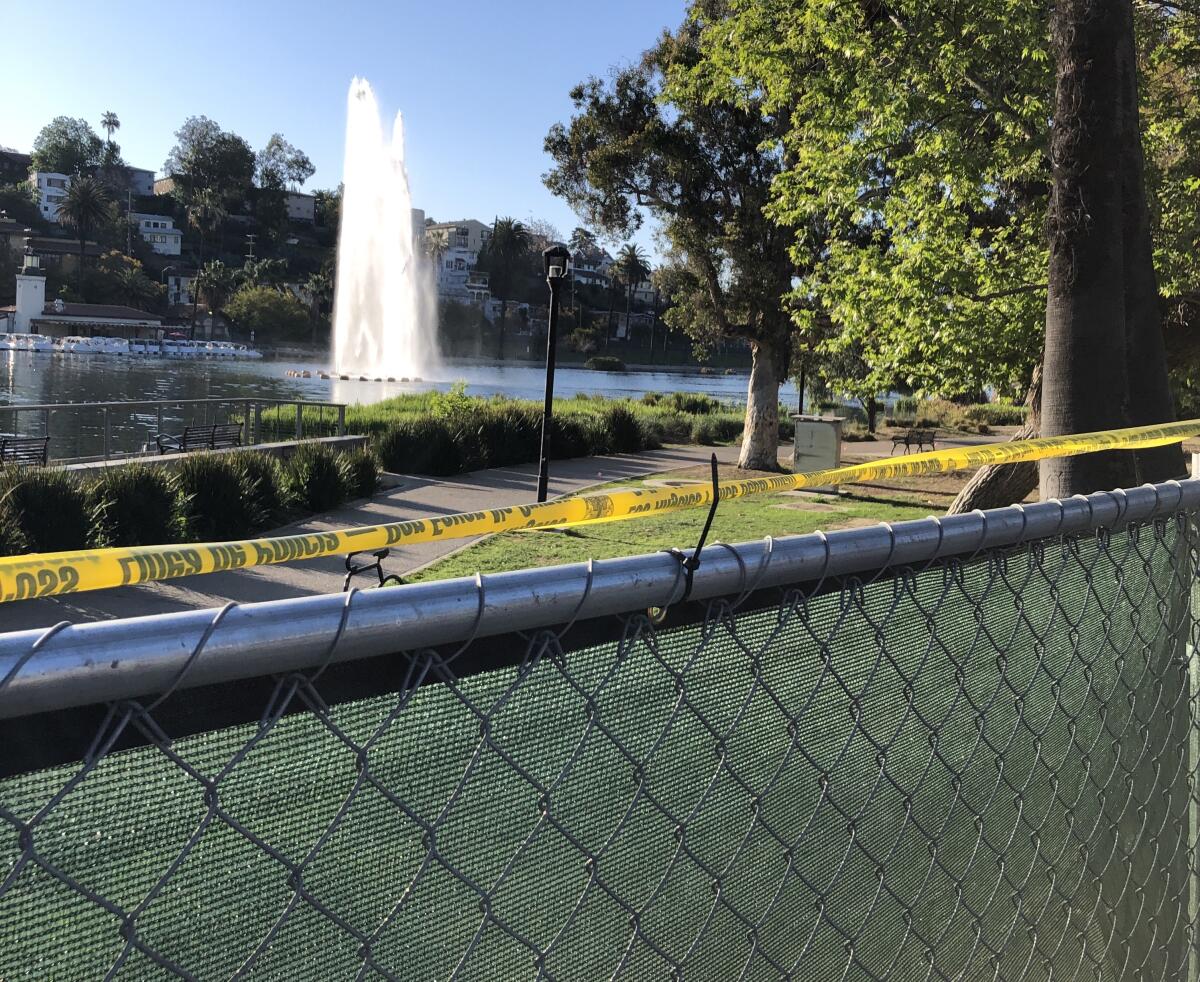
- Share via
We are slowly emerging from the pandemic, and it sure looks like there are a lot of things that need fixing. I’m Carolina A. Miranda, arts and urban design columnist at the Los Angeles Times, with the week’s essential culture news.
The Echo Park shutdown
Construction fence and police tape. That’s about all you’ll see this week if you pay a visit to Echo Park Lake. Not to mention a robust (to put it mildly) police presence, which, on a recent Sunday visit, had patrols circling the park at regular intervals — as well as parked along the lake’s north end.
It is the only evidence left of the city’s forced removal last week of a homeless encampment from the public space. An encampment that, as my colleagues Benjamin Oreskes and Doug Smith reported last month, had begun to spring up on the shores of the lake as early as 2019, and whose scale was fed by the twin pandemics of COVID-19 and homelessness accelerated by the housing crisis.

The removal was accompanied by one roller coaster of a news cycle: Indications that the park would be cleared were followed by city officials being coy about when exactly the park would be cleared. This was followed by protests against the planned closures, which resulted in the detention by the LAPD of Times reporter James Queally, among various other members of the media, who were covering them. Mayor Eric Garcetti was largely absent as images of protestors facing off against police flooded social media but materialized at a press conference the following day, framing the relocation of many of the park’s inhabitants to interim housing as a success story. It was, he said, “the largest transition of an encampment ever in the city’s history.”
A transition that ended with an important public space — and an important green space — entirely blocked off from the public it purports to serve. (Though interestingly, homeless encampments lining the 101 Freeway nearby were left entirely untouched.)
Make the most of L.A.
Get our guide to events and happenings in the SoCal arts scene. In your inbox once a week.
You may occasionally receive promotional content from the Los Angeles Times.
In the wake of all this, representatives from other communities — in locations such as Venice, Hollywood and Boyle Heights — have publicly wondered if the city might forcibly clear encampments in their communities. As if this is a model worth replicating.
As Robin Petering, a researcher and policy co-chair for the homeless advocacy group Ktown for All, tells Curbed the episode may have very well set homelessness advocacy efforts back — procedures that over the past decade have been evolving away from the punitive (sudden sweeps, police presence) to solutions that focus on providing supportive services, such as healthcare. Last week’s actions, Petering says, have disrupted “systems and critical relationships that are necessary to solve homelessness in a humane and just way.”
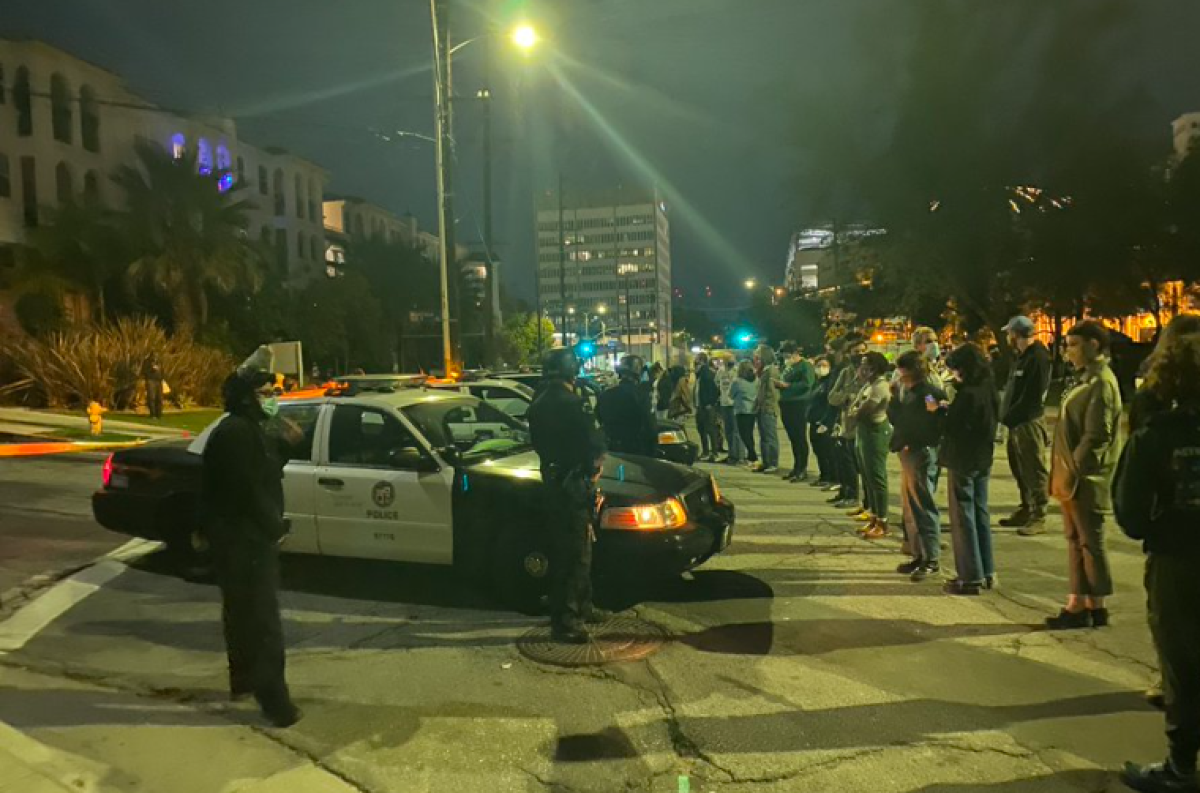
A big part of the problem stems from a lack of adequate housing — specifically, interim and supportive housing for a population of unhoused people that is estimated to exceed 60,000 in Los Angeles County alone. (I’ll be looking at architectural solutions in the interim housing area in the coming weeks, so stay tuned.)
But another issue goes much deeper — and that’s wages. Designer and architectural scholar Peter Martinez Zellner had an important piece about this last week in his newsletter, the Horizontal Fault.
Congress has been arguing itself to a standstill over the federal minimum wage (currently an appalling $7.25 an hour). But even the $15 an hour touted by President Biden and Sen. Bernie Sanders (I-Vt.) wouldn’t begin to help workers in expensive states like California. Zellner combs the research and notes: “In states like California, Arizona, Texas or Florida, even with the proposed wage hikes, the poorest renters will still need to work up to three full-time minimum-wage jobs to afford median rental rates.”
Housing insecurity and wage inequality, he writes, are closely linked in “corrosive, community-destroying cycles of impoverishment and discrimination.”
So the city can shut down all the encampments it wants in locations like Echo Park or Hollywood or Venice or Boyle Heights. We can build acres of villages of tiny homes to get people out of the rain. But until we tackle some of the bigger issues — such as basic pay — that encampment on your doorstep? It’s not going away.
In the galleries
Artist Amy Sherald’s work came to national attention when she painted First Lady Michelle Obama’s portrait for the National Portrait Gallery in 2018. Now the New York-based artist has a solo show at Hauser & Wirth in downtown L.A., her first on the West coast. She chats with The Times’ Makeda Easter about how she came to use grey scale as a way of representing Black skin and why it’s important to her to show moments of joy.
“My work doesn’t commit Black life to grief,” she says. “There’s an assumption of a whole Black life being inextricably tied to struggle.”
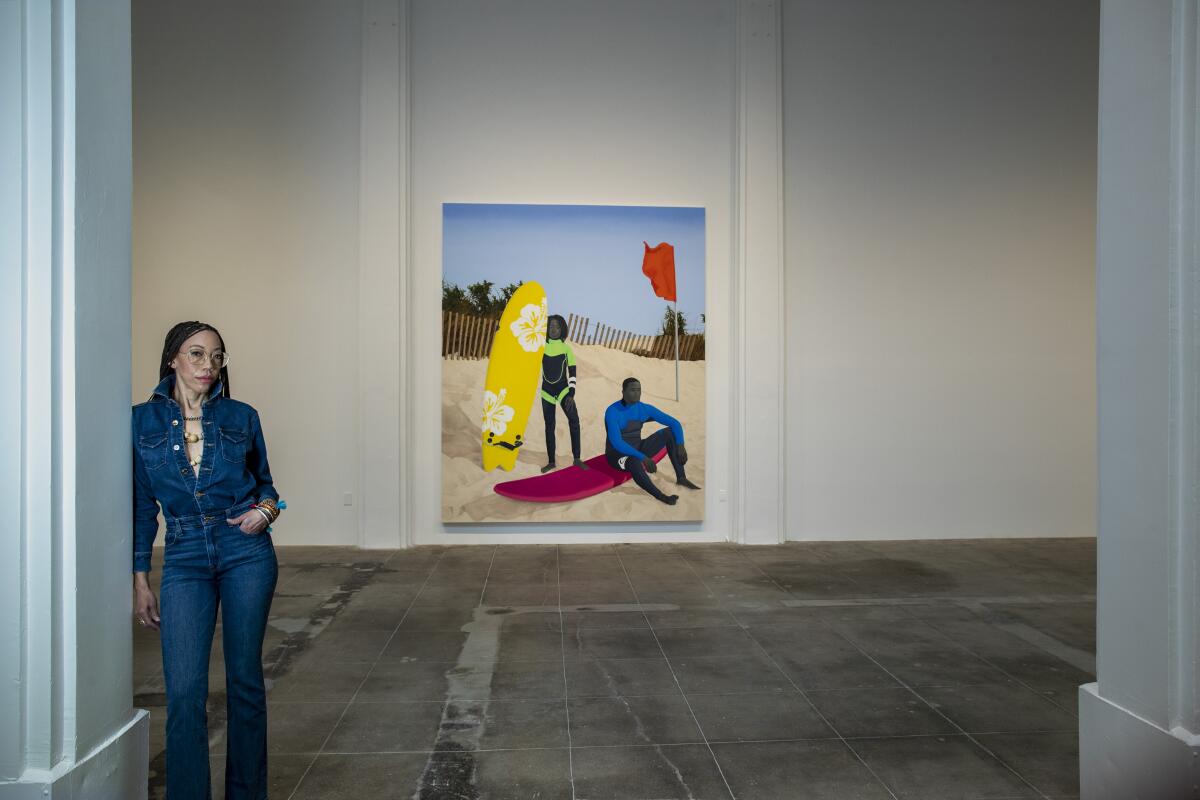
Times art critic Christopher Knight paid a visit to six shows at LACMA in advance of the museum’s reopening to the public this week. These include video installations by Bill Viola and Cauleen Smith, a sprawling retrospective devoted to Japanese painter Yoshitomo Nara, pinhole-camera images of LACMA’s demolished east campus by German artist Vera Lutter, a show of new acquisitions and a thematic show drawing from the permanent collection, titled “NOT I: Throwing Voices (1500 BCE-2020 CE).” The latter may offer a preview of the types of exhibitions visitors might expect in the rising Peter Zumthor-designed building. Curated by José-Luis Blondet, “NOT I” is “eloquent and always informed,” writes Knight. But it also “feels incomplete.”
Enjoying this newsletter? Consider subscribing to the Los Angeles Times
Your support helps us deliver the news that matters most. Become a subscriber.
The Getty Museum announced a notable acquisition this week: “Lucretia,” a 1627 canvas by Artemisia Gentileschi, in honor of the Roman heroine who committed suicide after being raped. More poignant is the fact that Gentileschi was a survivor of sexual violence herself. As Jessica Gelt notes, the acquisition is a BIG DEAL: “The artist — long overlooked — now is considered the most consequential female painter of 17th century Italy.”
The Lucas Museum of Narrative Art has acquired Judith F. Baca’s archive documenting the creation of “The Great Wall of Los Angeles,” the epic, 1970s mural chronicling the history of Southern California that sits inside the Tujunga Wash flood control channel. Baca is pleased to know that her archive has found a home: “It’s now absolutely secure and in good care,” she tells Deborah Vankin. “All the hundreds of drawings that went into the conceptualization of the work, the process of thinking about a giant monument of this scale, will now be visible to the public and preserved.”
Speaking of the Lucas Museum, the institution has pushed back its opening to 2023 due to pandemic-related delays in construction on its rising building, designed by Ma Yansong of MAD Architects.
Don’t worry, architectural sneaker tread of doom: I’ll be waiting 4 u <3<3
Equity in the arts
The Huntington Library was built on the aesthetic vision of rail and real estate magnate Henry Huntington and his wife, Arabella Duval Huntington, who willed their vast collections of art (including the iconic “Blue Boy”) and rare books (a Gutenberg Bible), along with their meticulously cultivated San Marino estate, to the public upon their deaths. It was also built on more unsavory legacies: Huntington, who emerged from railroad wealth and its cruel exploitation of Chinese workers exploited Mexican workers in similar ways, paying them vastly less than white ones. Now the institution that bears his name — one whose leadership team remained white for more than a century — is attempting to evolve into the age of equity. In a lengthy report, I take a look at what this will require: a lot of work and some unsentimental self-examination.
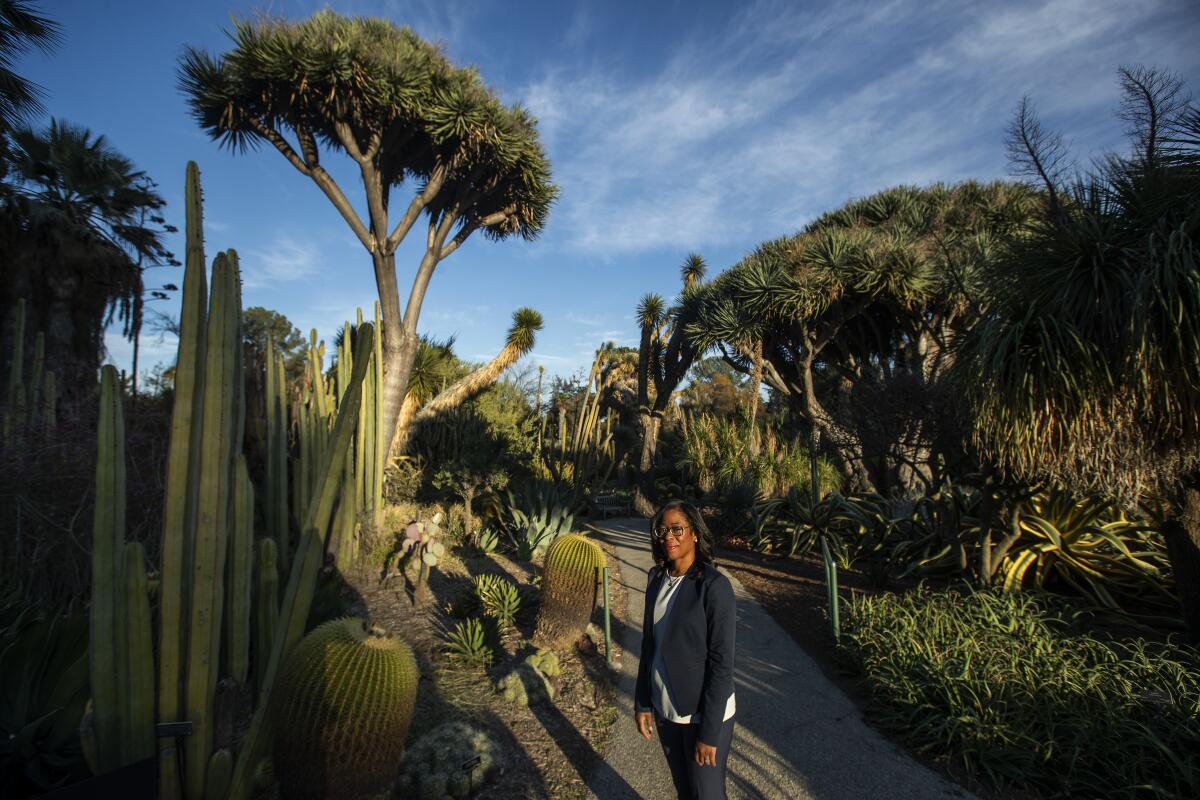
Jessica Gelt likewise reports on issues of representation at the L.A. Stage Alliance. On Tuesday, the organization held its annual Ovation Awards for local theater and not only mispronounced the name stage actor Jully Lee, it also showed a photo of a different Asian actor when her name was announced.
“I just felt like a nameless, faceless Asian person that happened to be nominated for one of their awards,” she tells The Times. The event has led to a reckoning over diversity at the 45-year-old organization, including the body that votes on awards. It also led East West Players to announce its withdrawal from the group in protest — a move that was followed by the withdrawal of more than two dozen theatrical organizations, including the influential Center Theatre Group and Geffen Playhouse.
Oscars and the fine arts
This week I have a look at the Oscars — specifically, the ceremony’s location. In keeping with social distancing guidelines, the Academy of Motion Picture Arts and Sciences is staging a small, supper-club-style show at Union Station, with additional elements broadcast out of its traditional home at the Dolby Theatre in Hollywood. Union Station is supremely cinematic. But the show risks turning L.A.’s biggest public transportation hub into a Baghdad-like green zone. And it’s a lost opportunity to show some solidarity with L.A.’s performing arts. Better idea: Hold the Oscars at the Music Center, which is currently totally empty.
Contributor Tim Greiving has an interesting report about how the musicians who work on film scores have been operating during the pandemic. For one, it has atomized the artistic process — sending performers into their closets and bedrooms to record digital files that are then assembled remotely. It has also laid bare the ongoing decline of this type of recording at L.A. movie studios. Twenty years ago, 500 players made a living recording scores; today that number is down to an estimated 150 to 200. “Of the 18 or so large scoring stages that operated during the heyday of Hollywood,” Greiving writes, “only Fox, Sony and Warner Bros. remain.”
Reporter Laura Zornosa reports on the seven artists selected to create art for the Oscars — and they are an international bunch, hailing from Nigeria, Sweden, Spain, Norway, Australia, Mexico and the U.S. It’s the 30th year in which the Academy has commissioned an artist to design its poster, a tradition that began in 1990, when Saul Bass was tapped.
And since we’re on the subject of Union Station: The Metro Art team has long worked on producing short- and long-term art installations and exhibitions at L.A. transit sites. With the pandemic, they’ve been getting virtual. I enjoyed this sound piece by composter Nailah Hunter, inspired by the morning light as it streams through the windows of historic Ticketing Hall.
Art and coronavirus
Gustavo Dudamel conducted a performance of “Otello” that featured 50 musicians and 75 singers (including American tenor Gregory Kunde in the title role) and 1,000 spectators — all indoors. It took place in Barcelona at the Gran Teatre del Liceu and “was all perfectly legal,” writes contributor James C. Taylor in his dispatch from Spain. “It may not be an ‘Otello’ for the ages,” he writes, “but for most of the audience at this point in the pandemic, it doesn’t need to be.”
It’s a good time to mention that California has new guidelines for pop-up outdoor theater and music.
Times photographers recorded L.A. shutting down at the beginning of the pandemic. Now they capture a city coming back to life in an expansive photo essay.
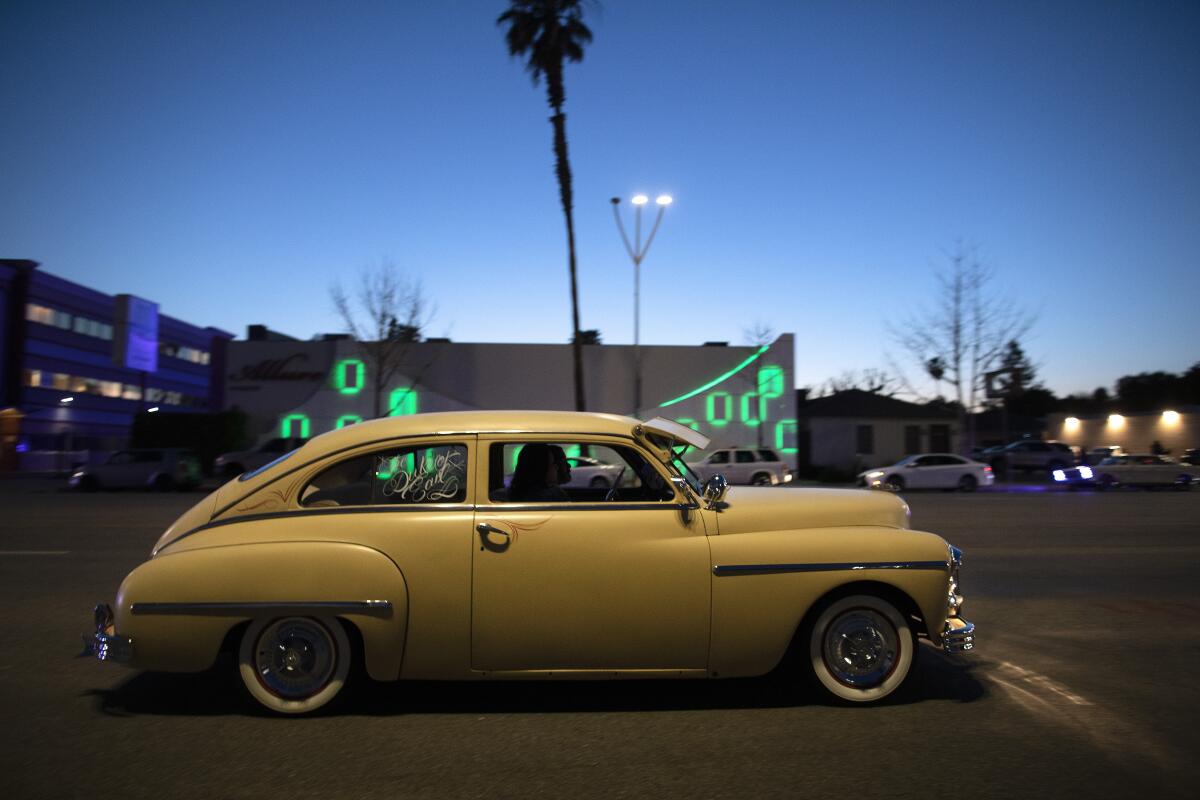
Essential happenings
Matt Cooper has got it going on with 17 culture picks, including a Broadway benefit with Cynthia Erivo and Jim Parsons and the latest L.A. Phil “Sound/Stage,” honoring the first concert at the Hollywood Bowl.
Passages
Antonio Caro, a conceptual artist from Colombia whose works critiqued capitalism and consumerism by coopting its most visible symbols (such as the logo for Coca-Cola), is dead at 71. (Bomb magazine had a good interview with the artist in 2010.)
Constance Demby, a pioneer of new age, ambient and electronic music, who created some of her works on instruments of her own invention, has died at the age of 81.
Buddy Deppenschmidt, a jazz drummer who helped ignite a worldwide interest in bossa nova, is dead at 85.
Michael Friedlander, a New York architect who made inventive forms of prosaic government commissions — including a salt shed whose sharp geometric angles evoked a grain of salt — is dead at 63.
In other news
— “Game of Thrones.” On Broadway. That is all.
— ArtCenter College of Design president Lorne M. Buchman will retire next year after 12 years in the role.
— The American Alliance of Museums has guidelines about disclosing the provenance of antiquities. Most museums, reports Hyperallergic, aren’t abiding by them.
— Artnet’s Ben Davis takes another one for the team: This week he visits the Beeple Art Museum. “It feels aggressively thirsty. For your money.”
— An interesting podcast convo with Hammer Museum chief curator Connie Butler about museum-ing during and after a pandemic.
— The Getty Center has named its lecture hall after the late architecture critic Ada Louise Huxtable, the first winner of the Pulitzer for criticism.
— Criticism is not dead. Meet Louisa Whitmore, the teen who hates Manhattan’s super-tall, pencil-thin 432 Park building, designed by Rafael Viñoly.
— A new doc about Alvar Aalto shows that the Finnish architect owed a big design debt to his first wife, Aino Aalto.
— In cities across the U.S., freeways have plowed unsparingly through Black and Latino neighborhoods. Now the issue has drawn President Biden’s attention.
— Preserve Orange County has debuted a handy interactive map that shows the county’s historic sites.
— From the Department of Art Merch: a fashion line inspired by the work of painter Martín Ramírez.
And last but not least ...
Ashley Feinberg comes through with a necessary deep dive on Calista Gingrich’s Instagram account.
The biggest entertainment stories
Get our big stories about Hollywood, film, television, music, arts, culture and more right in your inbox as soon as they publish.
You may occasionally receive promotional content from the Los Angeles Times.




